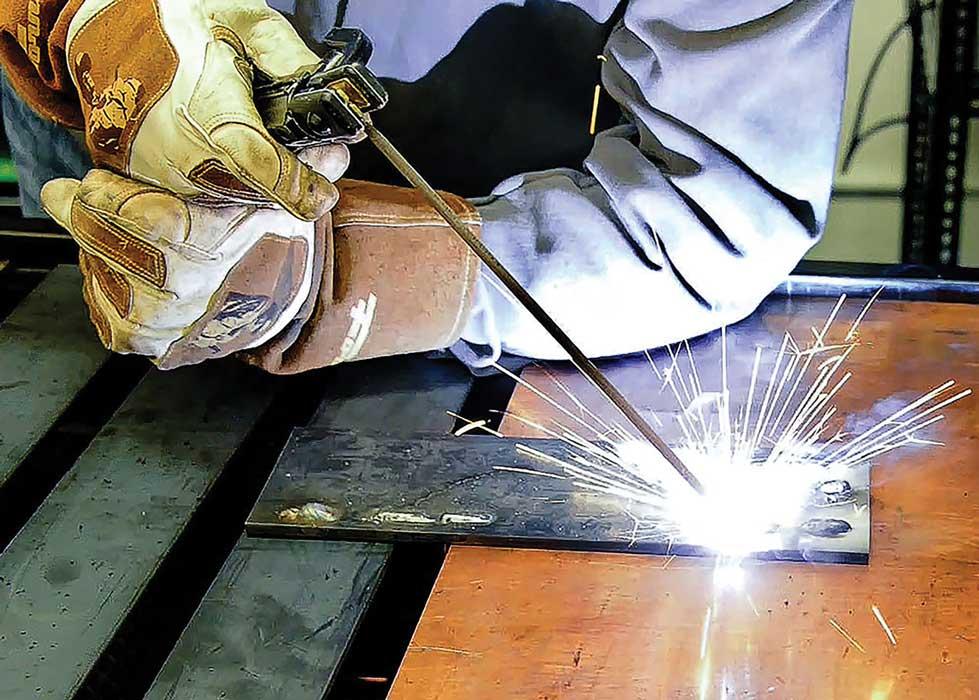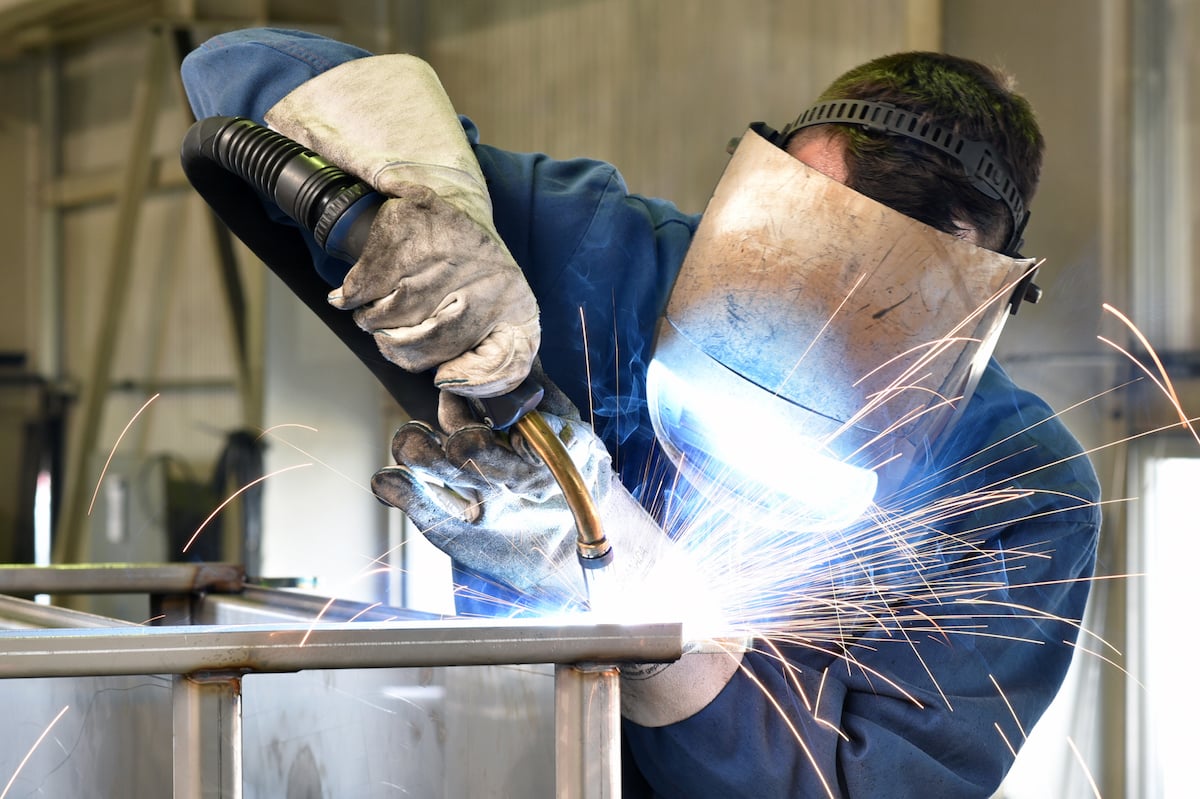Usual Welding Repair Work Issues and Just How to Address Them Properly
Welding repair work usually encounter a series of concerns that can threaten the integrity of the last item. Typical troubles consist of insufficient penetration, porosity, and misalignment, to name a few. Each problem provides one-of-a-kind difficulties that call for particular techniques for resolution. Understanding these concerns is vital for welders intending to enhance their outcomes and abilities. This discussion will discover these common welding repair service issues and efficient approaches to address them.
Insufficient Penetration
Inadequate penetration takes place when the weld metal fails to totally fuse with the base material, causing weak joints and potential architectural failings. This problem often stems from insufficient warm input, wrong electrode angle, or inappropriate welding rate. Welders might experience inadequate infiltration as a result of a miscalculation of the essential parameters for a specific material thickness or kind. Furthermore, contamination on the base product's surface area can hinder reliable bonding, exacerbating the problem. To attend to insufficient penetration, welders should assure ideal setups on their devices and preserve a clean work surface. Routine evaluation of welds is recommended to determine any kind of shortages early, permitting timely adjustments and the prevention of jeopardized structural integrity in bonded assemblies.
Porosity
Porosity is an usual defect in bonded joints that shows up as small gas bubbles entraped within the weld metal. This problem can compromise the stability of the weld, leading to lowered stamina and potential failure under stress. Montana Mobile Welding and Repair Belgrade. Porosity commonly occurs from contamination, moisture, or improper welding techniques, which enable gases to get away into the liquified weld pool. To deal with porosity, welders should ensure correct surface prep work, maintain a tidy workplace, and use appropriate welding parameters. In addition, picking the appropriate filler material and shielding gas can alleviate gas entrapment. Normal assessment and screening of welds can aid recognize porosity early, assuring timely rehabilitative activities are taken, therefore maintaining the top quality and dependability of the welded structure
Misalignment
Misalignment in welding can arise from numerous factors, consisting of improper arrangement and thermal growth. Recognizing the origin is important for effective resolution. A number of modification strategies are available to realign parts and assure architectural honesty.
Reasons for Misalignment
Welding imbalance commonly comes from a variety of underlying concerns that can endanger structural honesty. One key cause is incorrect fit-up of parts before welding, which can result in gaps and irregular surfaces. Variations in thermal expansion during the welding procedure can additionally lead to distortion, specifically if the materials being joined have various coefficients of expansion. Additionally, poor fixturing and clamping may fall short to hold components safely in area, bring about motion throughout welding. Poorly kept equipment, including welding machines and devices, may introduce inconsistencies in the weld bead, further adding to imbalance. Operator error, stemming from insufficient training or experience, can additionally play a considerable duty in producing misaligned welds.

Improvement Strategies Readily Available
Dealing with misalignment properly calls for a mix of restorative techniques customized to the certain issues available. One common approach is the usage of jigs or fixtures to hold elements in the appropriate placement during welding, making certain constant alignment. Additionally, preheating the products can aid minimize distortion and enhance fit-up. For substantial misalignment, mechanical realignment methods, such as using hydraulic jacks or clamps, can be used to fix the setting prior to welding. Post-weld warm therapy may likewise be needed to soothe stresses caused by misalignment. Mindful examination and adjustment during the arrangement phase can prevent imbalance concerns from ending up being significant issues, promoting a smoother welding process and boosting total structural honesty.
Distortion
Distortion is an usual challenge in welding that can develop from different aspects, consisting of irregular heating and air conditioning. Understanding the causes of distortion is important for applying reliable avoidance techniques. Resolving this problem not only improves structural honesty yet additionally improves the general top quality of the weld.
Causes of Distortion
When based on the extreme warm of welding, materials commonly undertake modifications that can result in distortion. This sensation mainly occurs from thermal development and contraction throughout the welding procedure. As the weld location warms up, the material expands; upon cooling, it acquires, which can produce interior stress and anxieties. On top of that, unequal heating throughout a workpiece can aggravate these anxieties, resulting in warping or flexing. The kind of material likewise plays a significant role; metals with differing thermal conductivity and coefficients of expansion might react differently, bring about unpredictable distortions. Bad joint style and insufficient fixturing can add to misalignment during welding, increasing the chance of distortion. Understanding these reasons is crucial for effective welding repair work and avoidance strategies.
Avoidance Techniques
Efficient prevention techniques for distortion throughout welding concentrate on managing warm input and making sure appropriate joint layout. Maintaining a consistent warmth input helps to minimize thermal development and tightening, which can bring about distortion. Making use of techniques such as preheating the work surface can also lower the temperature level gradient, promoting uniform home heating. Furthermore, picking appropriate joint styles, such as T-joints or lap joints, can boost security and decrease anxiety focus. Executing appropriate fixturing to protect the workpieces in place better aids in preserving placement during the welding procedure. Ultimately, staggered welding series can disperse heat a lot more evenly, protecting against localized distortion. By applying these methods, welders can greatly decrease the likelihood of distortion and improve the overall high quality of their welds.
Breaking
Cracking is a typical concern encountered in welding repairs, commonly resulting from different factors such as inappropriate cooling rates, material option, or poor joint prep work. The occurrence of splits can significantly compromise the stability of the weld, bring about potential failings throughout operation. To address this problem, welders have to initially examine the origin triggers, ensuring that products work and suitably picked for the specific application. In addition, controlling the cooling rate during the welding procedure is important; rapid air conditioning can cause stress and anxiety and result in fracturing. Appropriate joint style and prep work also add to reducing the danger. Applying these methods can boost weld top quality and sturdiness, inevitably lowering the chance of splitting in ended up weldments.

Insufficient Fusion
A significant issue in welding fixings is insufficient combination, which happens when the weld metal does not properly bond with the base material or previous weld passes - Montana Mobile Welding and Repair Belgrade. This issue can cause weak points in the joint, possibly compromising the honesty of the bonded structure. Variables adding to incomplete blend consist of not enough heat input, improper welding technique, and contamination of the surface areas being signed up with. To resolve this problem successfully, welders need to guarantee correct pre-weld cleaning and surface preparation, in addition to change their welding criteria to achieve sufficient infiltration and blend. Routine evaluation throughout the welding process can additionally assist determine insufficient combination early, enabling prompt corrective measures to improve the overall high quality of the weld
Overheating
While welding repair services can enhance architectural integrity, overheating offers a significant difficulty that can bring about product destruction. Excessive heat throughout welding can change the mechanical homes of metals, leading to decreased toughness, raised brittleness, and warping. This sensation is particularly essential in high-stress applications where structural reliability is vital. Recognizing overheating can involve visual examinations for discoloration or distortion, as well as keeping an eye on temperature level throughout the welding procedure. To alleviate the threats connected with overheating, welders must utilize suitable techniques, such as regulating warmth input, adjusting traveling rate, and making use of ideal filler products. In addition, executing pre- and post-weld warmth treatments can aid restore material properties and improve the overall quality of the repair, guaranteeing lasting efficiency and security.
Regularly Asked Concerns
What Are the Usual Indicators of a Welding Defect?

Exactly How Can I Check My Welds for Quality?
To examine welds for top quality, one can use aesthetic inspections, ultrasonic testing, and radiographic approaches. Each technique guarantees structural integrity, identifies flaws, and confirms adherence to defined requirements, eventually enhancing the integrity of the bonded joints.
What Safety and security Preventative Measures Should I Take While Welding?
When welding, one should prioritize safety by wearing proper personal safety equipment, ensuring proper air flow, safeguarding flammable materials away, keeping a clean work space, and recognizing environments to stop mishaps and injuries.
Can I Fix a Weld Without Redesigning the Entire Joint?
Repairing a weld without renovating the entire joint is feasible, depending on the damage (Montana Mobile Welding and Repair Belgrade). Techniques such as grinding, including filler material, or making use of a welding process can efficiently resolve particular imperfections while maintaining the bordering structure
What Equipment Are Vital for Efficient Welding Services?
Essential tools for reliable welding fixings consist of a welding maker, cord brush, mill, protective equipment, clamps, and filler products. Each tool plays an essential function in making sure high quality and safety and security throughout Recommended Reading the repair work procedure. Porosity commonly emerges from contamination, wetness, or improper welding methods, which permit gases to get away into the liquified weld pool. Poorly kept tools, including welding makers and devices, might introduce incongruities in the weld bead, more contributing to misalignment. When subjected to the intense warmth of welding, products typically go through adjustments that can lead to distortion. Breaking is a common concern experienced in welding repairs, usually resulting from different elements such as inappropriate cooling prices, material option, or insufficient click this site joint preparation. A considerable concern in welding repair services is incomplete fusion, which happens when the weld steel does not effectively bond with the base product or previous weld passes.